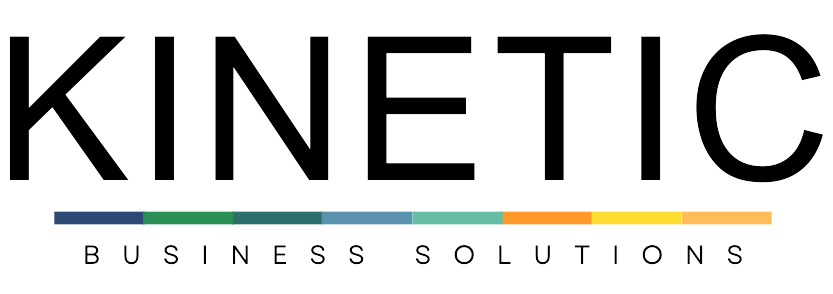In a previous post, we shared part one of our onboarding series, and you can find it here.
We revealed the data on onboarding and the many benefits for your organisation once you have a good process in place. Today we are continuing with how to take onboarding to the next level from month three and beyond.
During the First 3 Months (90 Days)
The most successful onboarding programmes don’t happen overnight. It can take several months to welcome someone into your space. During the first three months, remember to check in frequently, schedule interviews, and give your employees plenty of opportunities to air any concerns they may have.
According to the Society for Human Resources, the first three months of your onboarding strategy will concentrate on making hires feel:
- More confident in their roles
- Clear on the expectations you have for them
- Socially integrated into the team
- Immersed in the company culture
To achieve these four goals:
- Deliver plenty of continued training opportunities: Training and shadowing must continue until your employee feels confident and comfortable in their role. Studies show that people can forget up to 79% of what they’ve learned in a month with no follow-up educational activities.
- Schedule interactions with crucial people in the business: Make sure that your new staff members have a chance to meet with business leaders, shareholders and executives, not just the employees that they’ll be working with every day, this will make them feel more immersed within the company culture.
- Assign the first major task or project: Start giving your newcomer a chance to demonstrate their skills and prove their value with significant tasks. Be clear on the objectives of the project and the expected deliverables before they get started.
Remember to regularly solicit feedback from your new hire too. Ask them what’s working for them in the current onboarding process, and what they would like to change. As you continue to welcome diverse new people onto your team, you’ll find that everyone has their own onboarding needs and preferences.
During the First 6 Months
The Aberdeen group suggests that only 15% of companies continue to onboard after 6 months. However, 90% of people decide whether to stay or go within that initial period.
When the first 3 months have passed, you’re dealing with an employee who understands the basics of your organisation and knows how to perform well in their job. However, this doesn’t mean onboarding needs to stop. The goal between the 3- and 6-month milestones is to encourage ongoing development in your staff members.
Maintain progress by:
- Performing an Employee Assessment: After the first 6 months, conduct an assessment to see how much progress your new staff member has made so far. Discuss both the expectations you have for your employee and any personal goals they may have set for themselves.
- Provide Plenty of Recognition: During the full first 6 months, don’t forget to recognise anything that your newcomer accomplishes. The more you can provide useful feedback, the quicker your team member will settle into their role. During your 6-month review, help the individual see the impact that their work has made on the business to give greater meaning to their role.
- Introduce New Functional Training Opportunities: Now that you’ve finished delivering basic training, it’s time to look for development opportunities that serve your new employee’s goals. For instance, do they want to become a manager? Look for ways they can learn leadership skills. If they hope to move to a new role in the next 5 years, work on expanding their knowledge in techniques crucial to that position.
The first 6 months is an excellent opportunity for employers to show their people that they’re truly invested in their progress. With feedback and new training opportunities, you can help your people to visualise a long-term future with your organisation.
During the First Year
According to a professor from Harvard Business School, Michael Watkins, new employees only begin to show their real value after the first 6 to 7 months. In the period between the 6 month and 12-month milestones, you’ll be able to start uncovering your new hire’s true potential and planning what you can do to develop them in the years to come.
The end of the first year is the period when the typical onboarding experience transitions into a process of retention and ongoing employee engagement. As well as shifting from on-the-job training to continuous development, make sure that you:
- Arrange informal meetings with employees: During this time, discuss the things that you think the staff member can do better, and ask them for feedback on your onboarding process. This is a chance for you to develop your strategy for future employees.
- Discuss plans for the year ahead: Let your newcomer know that they’re now a valuable part of your team for the long-term and share with them some of your goals for the years ahead. Ask them about their targets too and see where you can make the two concepts align. For instance, if you want to expand your business, you’ll need new managers. If your employee wants to earn a promotion, you can look for ways to help them become a good candidate for a managerial position.
- Celebrate the first year: Draw attention to the challenges that your employee overcame during the first year and show them that you appreciate their hard work. This is a great way to build their confidence and convince them that they’re making a difference to your team.
Who Is Involved in Creating an Onboarding Plan?
When it comes to onboarding new employees, responsibility needs to be shared throughout your entire company. Every team member plays their part in:
- Making the new person feel welcome
- Introducing them to business expectations
- Getting them ready for success in a new role
Some of the people included in your onboarding team will be:
- Human Resources: These individuals play a major role in orienting your newcomers and making sure that they’re prepared for work with your business. They may deliver handbooks, checklists, and training, as well as ensuring that the proper paperwork is filled out.
- Managers: The manager of the new hire will usually be responsible for the most hands-on duties of onboarding, which includes giving tours of the office, introducing them to colleagues, and making sure that the employee understands business policies. Managers also introduce your hires to the values, goals, and missions of the company.
- Colleagues and peers: A new hire isn’t just working with a manager in their new role. The new staff member’s colleagues have a responsibility to make that person feel like a part of the team. They can answer any questions that a person may have about basic processes, and even act as “buddies” to guide an employee through the first few weeks of their new role.
- Executives and Owners: While many leaders, business owners, and executives won’t play a huge role in the onboarding of a new employee, they can make an effort to welcome the addition to their team and introduce them to the business.
- The Employee: The employee themselves also has a crucial role to play in onboarding. These new people need to be committed to learning about business and integrating themselves into a team, or your onboarding plan won’t work.
Don’t Underestimate Onboarding
When it comes to the value and impact of onboarding, the data speaks for itself.
Effective onboarding programs improve productivity, increase employee retention and enhance the culture of your entire company. Completing a structured onboarding process also makes a staff member 58% more likely to remain with an organisation for 3 years or more.
In a competitive environment marked by talent shortages, onboarding is how you ensure that you keep the new people you worked so hard to find. Once you’ve invested in the right recruitment process, your onboarding strategy will allow you to unlock the potential of your carefully chosen talent.
How Kinetic Can Help
Kinetic specialise in sourcing professionals for leading organisations. If you need advice on how you can best implement these strategies and hire people who will help drive your business forward, contact us today.


